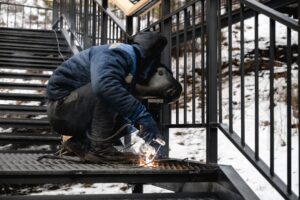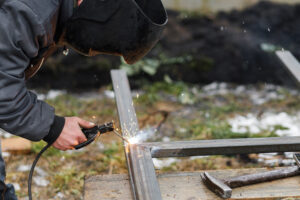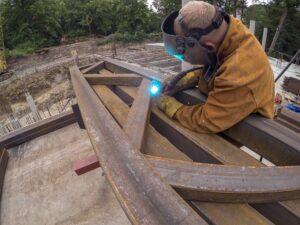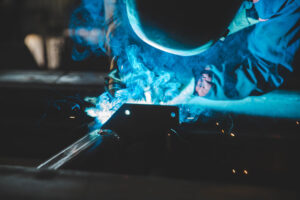When working on projects that involve welding dissimilar metals, selecting the right welding rod is critical to ensure strength, durability, and long-term reliability. Among the many options available, the 312 welding rod stands out as a versatile solution for tackling such challenges. But what makes it effective, and is it the best choice for welding dissimilar metals? In this blog post, we’ll explore these questions and provide detailed insights into how the 312 welding rod performs, its applications, and tips for getting the best results.
What Is a 312 Welding Rod?
A 312 welding rod is an electrode specifically designed for welding dissimilar metals. It is a stainless steel rod with a high alloy content, primarily composed of chromium and nickel. The unique chemical composition of 312 rods allows them to handle high heat inputs and provide exceptional strength and corrosion resistance.
One of the most defining characteristics of the 312 welding rod is its ability to join metals with varying compositions. It has a tensile strength of approximately 120,000 psi, making it ideal for applications where structural integrity is critical.
Can 312 Welding Rods Weld Dissimilar Metals?
Yes, 312 welding rods are highly effective for welding dissimilar metals. Their unique composition bridges the metallurgical gap between metals with different chemical properties. Whether working with stainless steel to mild steel, tool steel to carbon steel, or cast iron to steel, the 312 welding rod provides a reliable and robust joint.
Why Are 312 Welding Rods Effective for Dissimilar Metals?
- High Nickel and Chromium Content: These elements reduce cracking and improve ductility, accommodating dissimilar metals’ differing expansion and contraction rates.
- Versatility: The rod works with many metals, including stainless steel, carbon steel, alloy steel, and cast irons.
- Corrosion Resistance: The stainless steel composition offers protection against rust and corrosion, even when used on metals prone to oxidation.
Applications of 312 Welding Rods
The versatility of 312 welding rods makes them suitable for various industries and applications. Common uses include:
- Repair Work: Ideal for fixing worn or damaged equipment made from different metals, such as agricultural machinery or industrial tools.
- Manufacturing: Fabricating mixed-metal assemblies, such as joining mild steel to stainless or high-alloy steel.
- Construction: Suitable for reinforcing structural components, especially in environments where corrosion resistance is a priority.
- Automotive and Aerospace: Perfect for welding components that endure high stress and require a strong bond between different metal types.
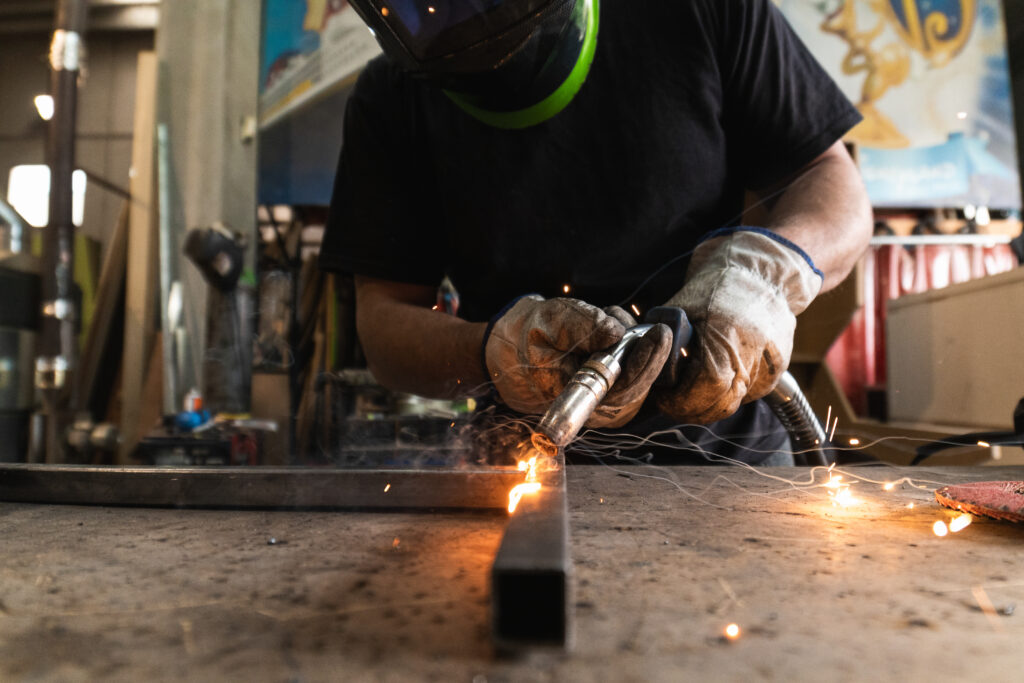
Tips for Welding Dissimilar Metals with 312 Welding Rods
While 312 welding rods are highly effective, successful welding requires proper technique and preparation. Here are some expert tips:
1. Understand the Metals You’re Joining
- Determine the base metals involved in your project. Each metal has unique properties, such as melting points and thermal conductivity, which affect the welding process.
- For example, welding stainless steel to carbon steel requires balancing the differences in thermal expansion rates.
2. Preheat and Post-Weld Treatment
- Some metals, such as cast iron, may require preheating to reduce the risk of cracking during welding.
- Post-weld heat treatment can also help relieve stress and enhance the durability of the weld.
3. Choose the Right Welding Machine Settings
- Use the appropriate amperage for your specific application. Too much heat can lead to warping or cracking, while insufficient heat may cause poor fusion.
4. Clean the Base Metals Thoroughly
- Remove any dirt, rust, oil, or paint from the surfaces of the metals to ensure proper adhesion.
- Use a wire brush, grinder, or chemical cleaner as needed.
5. Practice Proper Technique
- Maintain a consistent arc length and travel speed to achieve a smooth, uniform weld.
- Avoid excessive weaving to prevent weakening the joint.
Limitations of 312 Welding Rods
While 312 welding rods are versatile, they aren’t suitable for every application. Here are some potential limitations:
- Cost: Compared to standard electrodes, 312 welding rods are more expensive due to their high alloy content.
- Not Ideal for Aluminum: 312 rods are ineffective for welding aluminum or other non-ferrous metals.
- Skill Requirement: Welding dissimilar metals requires a good understanding of welding techniques and metallurgical properties, which may pose a challenge for beginners.
Alternatives to 312 Welding Rods
If 312 welding rods aren’t a fit for your project, there are other options to consider:
- 309 Welding Rods: Commonly used for welding stainless steel to mild steel, offering similar corrosion resistance.
- 7018 Electrodes: Ideal for general-purpose welding on carbon and low-alloy steels.
- Nickel-Based Electrodes: Suitable for welding cast iron or non-ferrous metals, though not as versatile for dissimilar metals as 312 rods.
Frequently Asked Questions About 312 Welding Rods
1. What Metals Can a 312 Welding Rod Join?
- The 312 welding rod can join stainless steel, carbon steel, tool steel, and cast iron. However, it cannot weld non-ferrous metals like aluminum or copper.
2. Is Preheating Necessary for Dissimilar Metal Welding?
- Preheating depends on the metals involved. For instance, cast iron often requires preheating, while mild steel does not.
3. What Is the Best Welding Technique for 312 Rods?
- Stick welding (SMAW) is the most common technique, but TIG welding can also be used for precise applications.
Why Choose Smith Welding & Fabrication for Your Welding Needs?
We specialize in advanced welding techniques at Smith Welding & Fabrication, located in Orange County, CA, including dissimilar metal welding. With years of expertise and state-of-the-art equipment, our team can handle projects of all sizes and complexities. Whether you need to repair machinery, create custom metal assemblies, or address unique welding challenges, we’re here to help.
What Sets Us Apart?
- Expert Technicians: Our welders are skilled in using 312 welding rods and other advanced materials to ensure top-quality results.
- Custom Solutions: We tailor our services to meet the specific needs of your project, ensuring precision and durability.
- Convenient Location: Based in Orange County, CA, we serve various industries and clients throughout Southern California.
Final Thoughts
The 312 welding rod is a powerful tool for joining dissimilar metals, offering unmatched versatility, strength, and corrosion resistance. By understanding its properties and using proper techniques, you can achieve reliable and long-lasting welds for even the most challenging projects.
If you’re looking for professional welding services, contact Smith Welding & Fabrication today. Our experienced team is ready to bring your vision to life with expert craftsmanship and attention to detail. Call us or fill out a form to learn more about our services and get a free quote!

